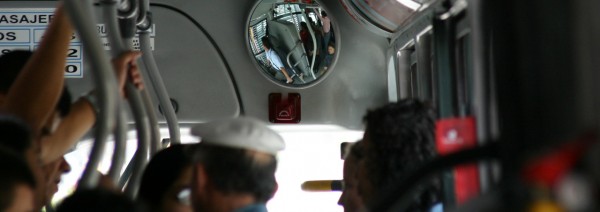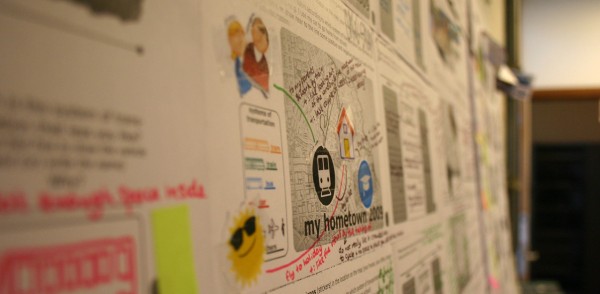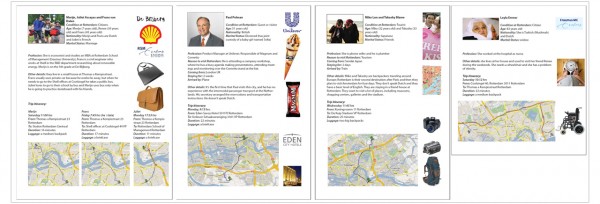Blog
Context mapping (part 3): Mobility Diary
The second tool used during the deconstruction phase of ITO was a “mobility-diary” (booklet) as a cultural probe. Booklets and probes are design-oriented user research toolkits that are based on self-documentation (Stappers, van der Lugt, Hekkert, & Sleeswijk Visser, 2008). They do not aim primarily at documenting but purposefully invite or provoke users to reflect on and verbalize their experiences, feelings and attitudes, and to visualize their actions and contexts. They address the challenge of studying users in their own setting, which are mainly personal. Proves provide useful information on users’ needs and context.
Context mapping (part 2): Personas
 The term ‘user’ is quite ambiguous and often the members of a design team each have somebody else in mind when imagining who the user is. It is possible to set up lists of facts and figures that relate to the user but these can be hard to empathize with.
The term ‘user’ is quite ambiguous and often the members of a design team each have somebody else in mind when imagining who the user is. It is possible to set up lists of facts and figures that relate to the user but these can be hard to empathize with.
Describing personas (Dantin, 2005) is a tool that can help bring to life the users of a product and give the design team clearly defined users to focus on. Creating a fictive character can make it easier to design for this user because you can empathize with the character. Each persona is created to be a representative for a specific user group that uses the product being developed. These personas often reflect more extreme members of a user group since designing for these will also include the more ordinary users.
Context mapping (part 5): the shaving experience of men
 As a design researcher at PeopleCare Inc (a fictitious company), a consultancy that was hired by the company Body World to do a context-mapping study. Body World inc., a manufacturer of household goods, wants to develop a human-centered innovative concept for body care products. Body World’s purpose with the study is to get to know their future users more clearly, and to generate directions, ideas and concepts for new products and/or services.
As a design researcher at PeopleCare Inc (a fictitious company), a consultancy that was hired by the company Body World to do a context-mapping study. Body World inc., a manufacturer of household goods, wants to develop a human-centered innovative concept for body care products. Body World’s purpose with the study is to get to know their future users more clearly, and to generate directions, ideas and concepts for new products and/or services.
Context mapping (part 1): Observation
EmoPix (Susa group ®)
Thanks to a graduation project called “Developing a Tool to Assess Emotions Elicited by Services” by David Güiza Caicedo (TUDelft 2009) was possible used a handheld with an EmoPix (Güiza Caicedo, 2009) tool to ask three participants about their impressions and emotions related to public buses in The Netherlands.
By using a handheld device with a built-in camera, a user can take pictures of different places, situations or things and add an emotional tag to them via a button (either physical or display based) depicting one of the available emotions. This way, the user can identify the stimuli by simply taking a photograph of them. In the end of the journey, the device was collected and the pictures were used to generate different sorts of visual collages, such as clustering them by location or by emotion, or building an emotional storyboard of the user’s experience throughout the time of his trip.




